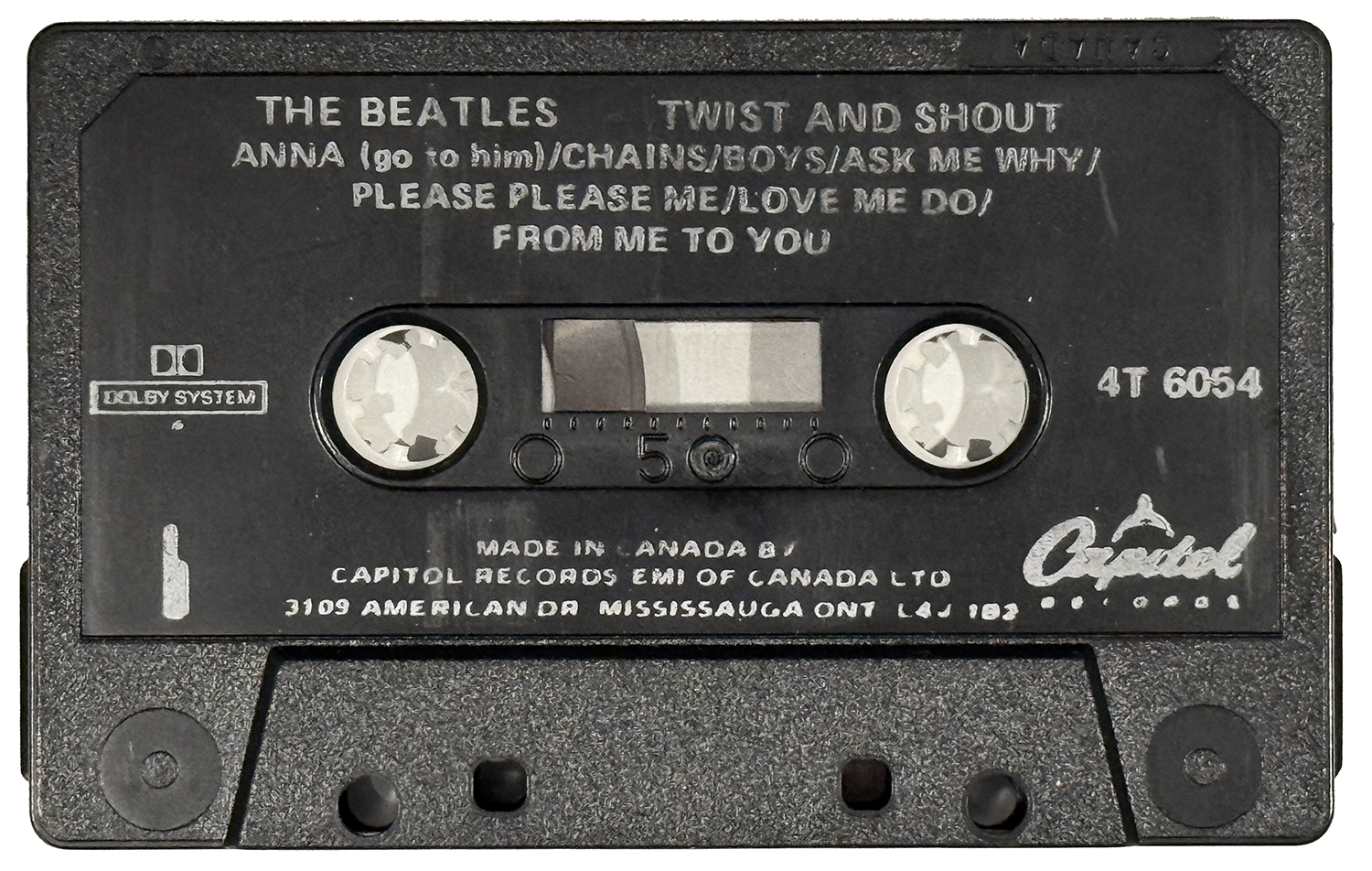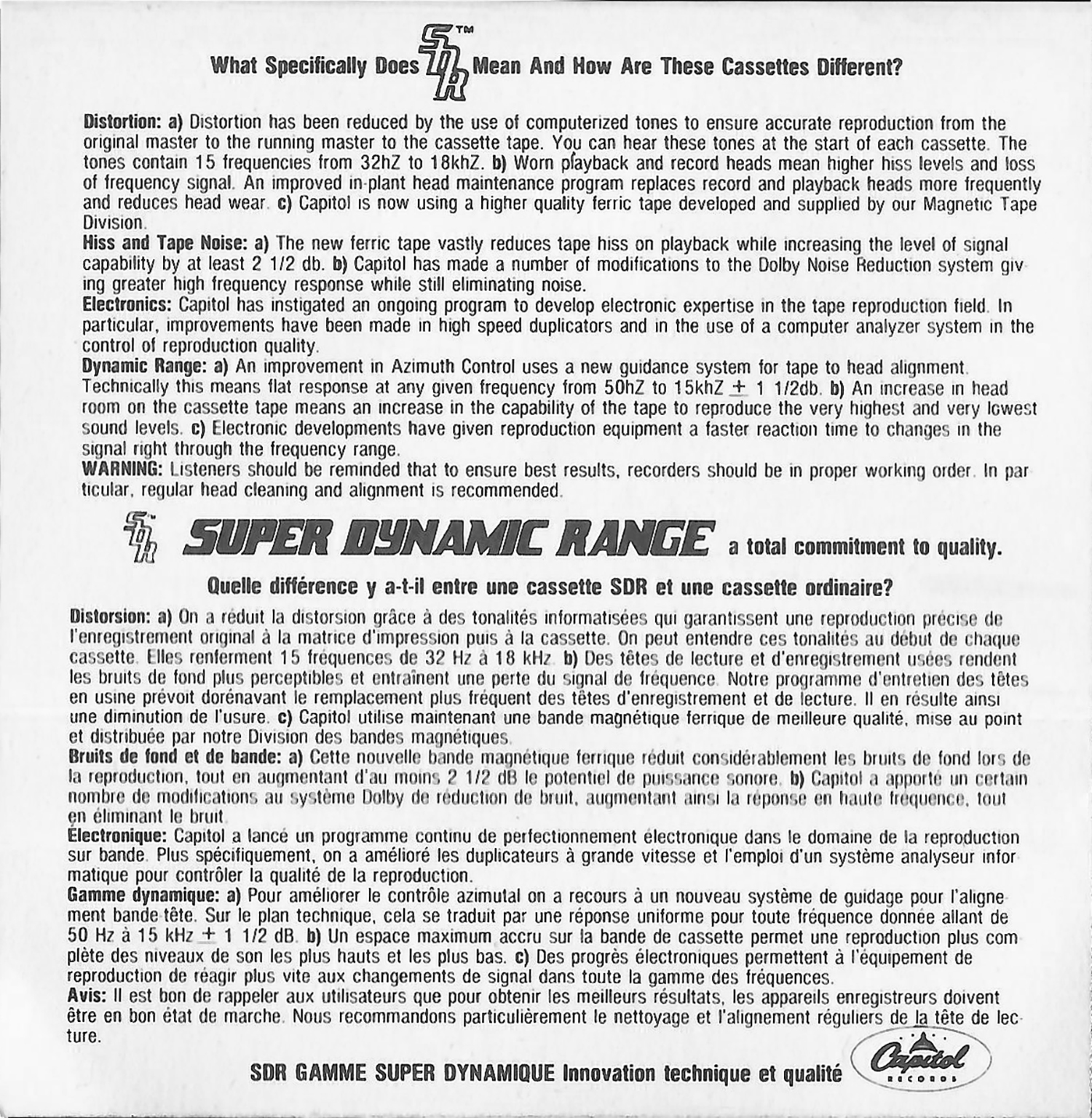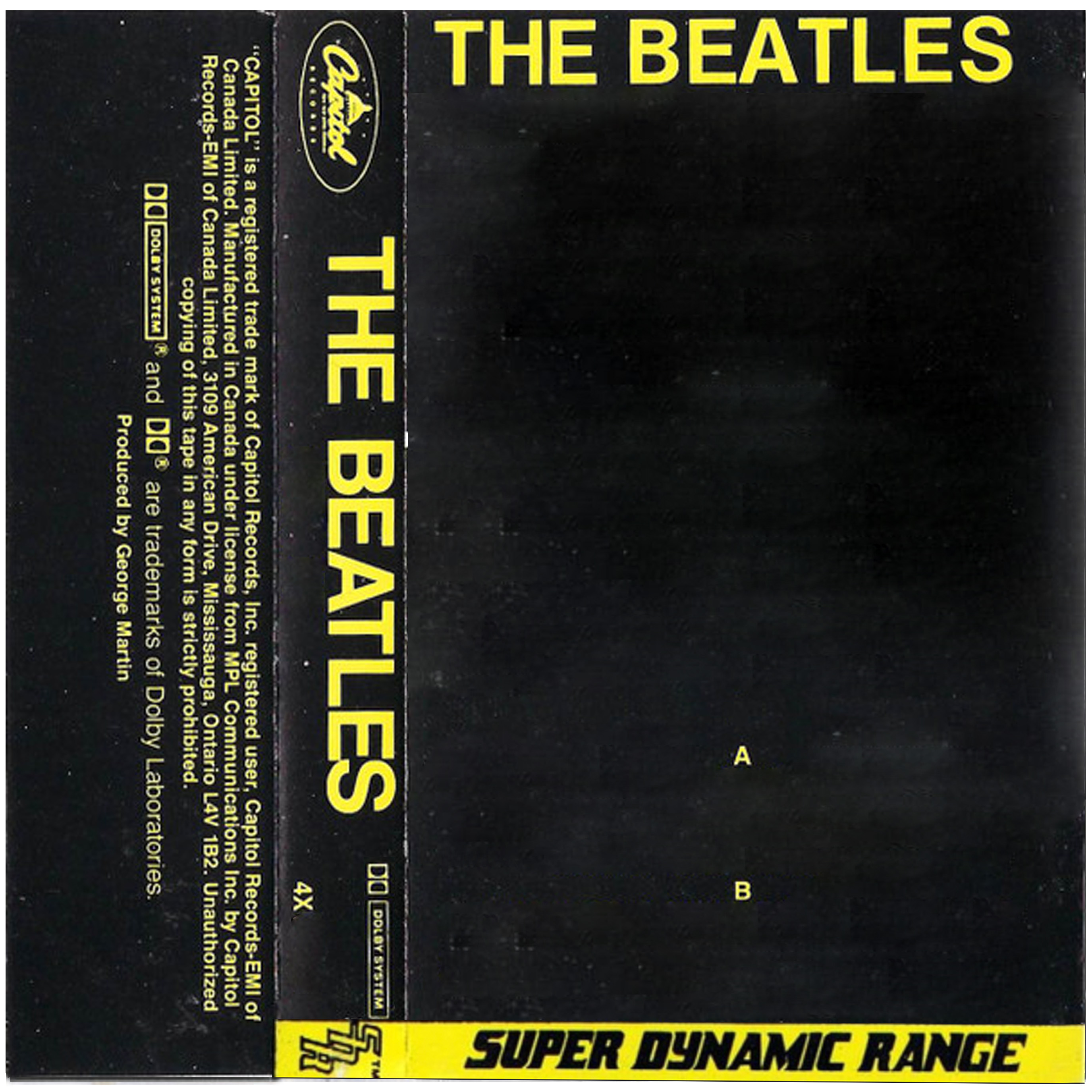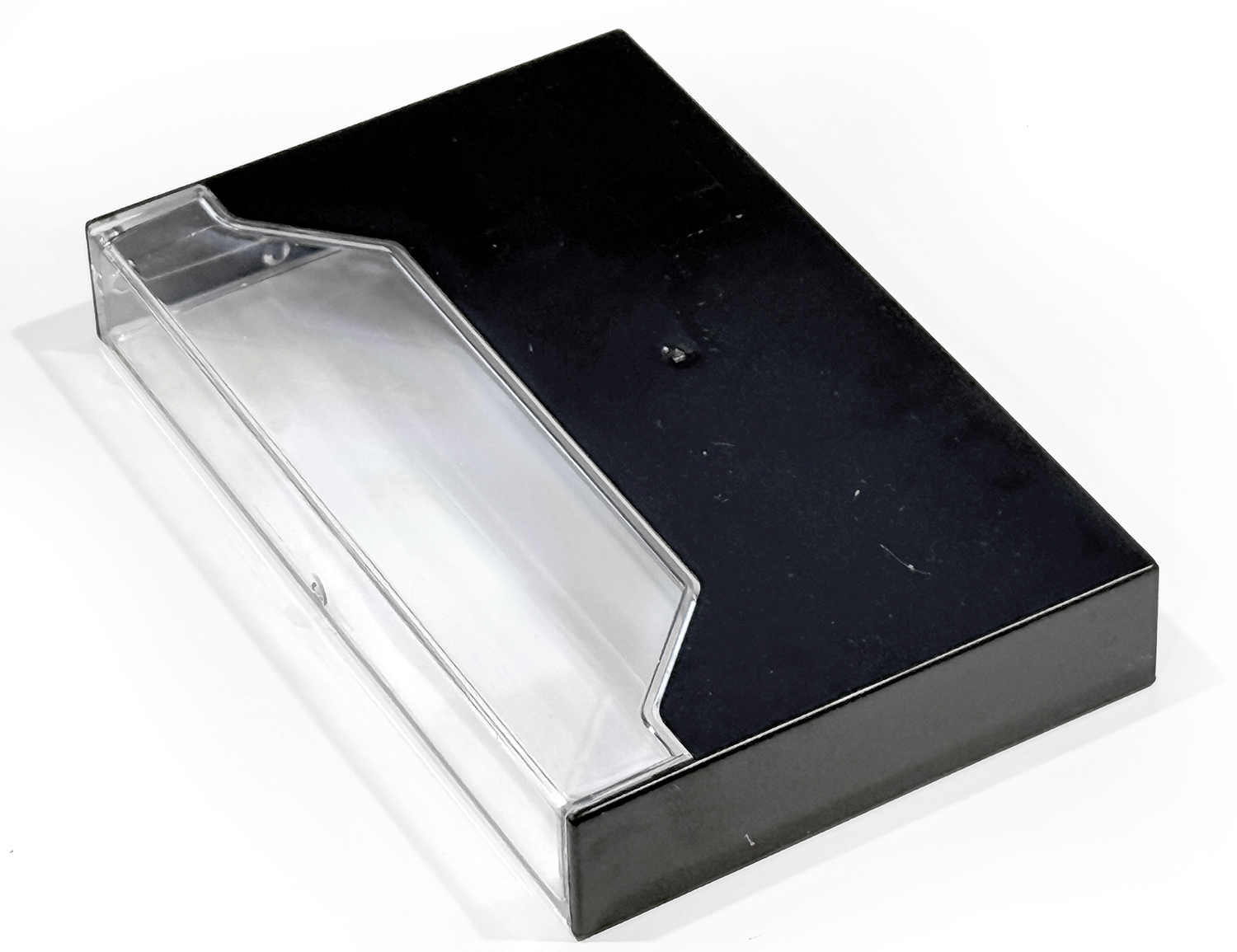← Twist And Shout Variations List
Twist And Shout
This album (and cassette release) was unique to Canada
K7.6054.4A.1 | First cassette issue - SDR Black Shell.
(1982-1983)
This is a unique release from Canada, both from the album and format perspectives: Twist And Shout was a Canadian creation, and the SDR format of cassettes was unique to Canada. This is also a significant release as it is the very first issue of the album in another format than vinyl, and was its first cassette incarnation. K7.6054.4A.1 was pressed on a black shell with silver print.
Availability
K7.6054.4A.1 was introduced in 1982 along with the new SDR format of pre-recorded cassettes, and remained available until around 1983, possibly even 1984, where the SDR logo was removed from the artwork in order to align with the standardized American "XDR" branding instead. Cassettes initially only removed the SDR branding from the artwork (see format numbers 5 and 6), but later iterations added the XDR logo on either the tape itself or the cardboard inlay (or both) (see format numbers 7, 8 and 9).

General Information
The three unique Canadian Beatles album from the 6000 series were never issued in another format than vinyl before 1982 (unlike the rest of the catalog that saw cassettes, 8-tracks, reel tapes and CDs issues), and overall, the cassette was the only other format that these three albums were ever reissued on. The first cassette incarnation was on the SDR format, a new technology developed and branded by Capitol Records of Canada.
Pressing Information
This first "pressing" was released in 1982 on the SDR format, and features a black shell with silver print. The catalog number remained "6054", but the prefix was changed to "4XT" matching the cassette series denomination. Early tapes from the 1980s (up until the mid 1990s) used the distinctive "futuristic robot font" (see the big "1" and "2"). These were later changed to a more standard font in the mid to late 1990s.

Different types of shells were used simulteneously and seemingly, also interchangeably. To further deepen the confusion, between 1982 and 1999, catalog numbers randomly went back and forth between "4XT" and "4T" prefixes. All these variations have been verified under different combinations from various sealed tapes that were unsealed to document this archive (sometimes even having a 4T tape in a 4XT J-card, or a 4XT tape in a 4T J-card).
The SDR/XDR Cassette Duplication Process in Canada
XDR (Expanded Dynamic Range), originally known as SDR (Super Dynamic Range) in Canada, was a high-fidelity cassette duplication and quality-control process developed to improve the sound quality of mass-produced pre-recorded audio cassettes. By incorporating audio checks at multiple stages of duplication, this method significantly expanded the dynamic range of the final product—up to 13 decibels greater than standard tapes.
While the XDR system is often credited to Capitol Records’ R&D division in Los Angeles, it was actually Capitol Records-EMI of Canada that first implemented and released a working version under the name SDR in 1982, preceding the U.S. launch.
At the time, Capitol Records Canada still operated somewhat independently from its American counterpart, allowing for unique innovation. A dedicated three-person team in Canada devised a streamlined alternative to the more complex U.S. approach. Whereas the L.A. team developed a high-speed tone generator kit to be distributed across various manufacturing facilities, the Canadian team designed a REAL-TIME test tone generator. This system recorded diagnostic tones directly onto the 1-inch master tape, alongside the music content. This approach not only reduced development time but also enabled full-chain quality testing—from master tape to finished cassette.
Canada’s early use of this method earned Capitol Records Canada a reputation for consistently high-quality audio. Eventually, around 1983-1984, they were asked to rebrand SDR as XDR to align with the global Capitol Records identity.

One hallmark of the SDR/XDR process was the inclusion of “Soundburst” test tones—brief audio signals placed at the beginning and end of each cassette. These tones acted as in-band markers that could be analyzed during duplication to ensure no significant loss of frequency content throughout the replication chain.
Although these tones were originally a technical feature, they took on a kind of cult status. Despite their jarring sound, many listeners came to associate them with high-quality tapes. Some modern reissues and fan-made releases even include these tones as a nostalgic nod to the era. For those who grew up in the 1980s, these signals are part of the analog audio experience on cassette.
Key Features of the SDR/XDR Process
● 1-inch wide master loop tapes were used instead of the typical ½-inch, allowing for higher fidelity, especially in the bass and high-frequency ranges.
● Some cassettes were mastered from digital sources, further enhancing sound quality. Test tones were recorded at both ends of the cassette to verify the integrity of the audio spectrum during duplication.
● The entire duplication system was optimized for consistent output, resulting in tapes that were clearer, richer, and more durable than standard issues.
● Though first pioneered by Capitol Records, other labels such as PolyGram also adopted the XDR system for select cassette releases, helping to raise the bar for audio quality across the industry.
Cover
The cover (or inlay, or "J Card") was under the new SDR format: black and yellow, with SDR information printed at the bottom of the card. Some titles were released on a light blue and black SDR card, but these were usually reserved for half price budget releases and compilations. This album was only released on the black and yellow card.
Some SDR cards had information on the SDR process printed on the other side of the otherwise blank J card (see the picture featured in the SDR section above).

Packaging
Tapes were sold in a black back jewel case , and sealed in either a firm wrap that was folded shut, or a regular heat-tightened shrink wrap.
Both types of wrapper have been verified to be used randomly between 1982 and 1995.

